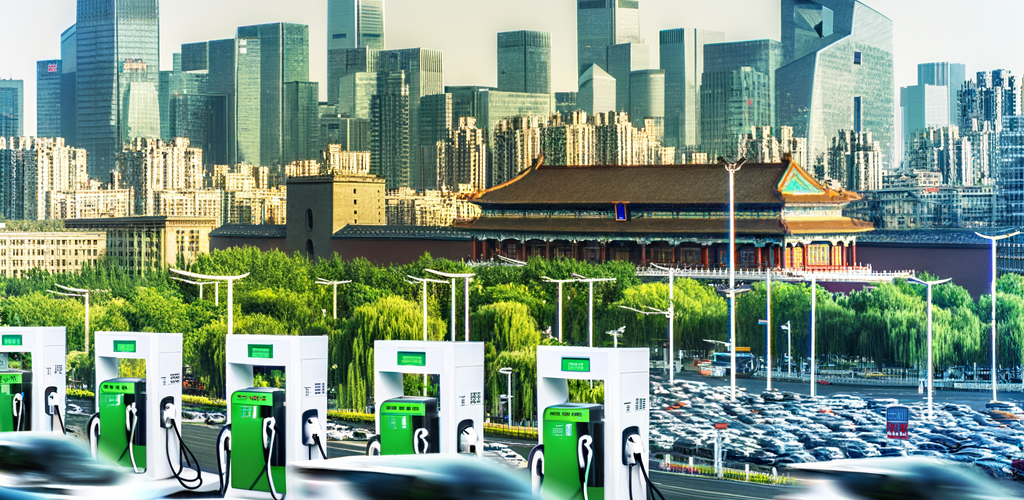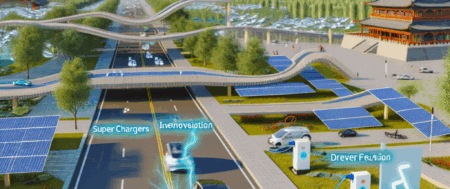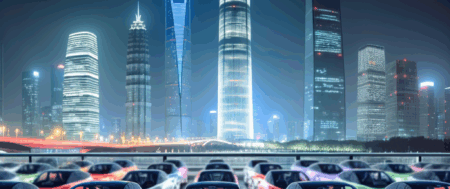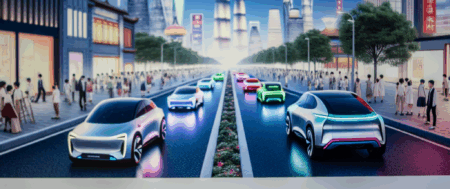Top brands are excelling in the Largest Automotive Market by engaging in strategic partnerships, focusing on technological advancements, and utilizing government incentives to tap into the increasing demand for Electric Vehicles (EVs) and New Energy Vehicles (NEVs) in China. Amidst urbanization, a booming economy, and environmental concerns, both foreign automakers and domestic car brands are leveraging joint ventures to navigate the complex regulatory landscape and meet evolving consumer preferences. These efforts, supported by the Chinese government’s push for greener transportation, position these brands well in the face of market competition, highlighting the importance of understanding consumer desires and technological innovation in thriving within this dynamic sector.
In the heart of the global automotive industry’s evolution, China stands as the undisputed titan, boasting the title of the Largest Automotive Market in the world. This colossal market, fueled by a rapidly growing economy, an expanding urbanization wave, and an ever-increasing middle class, has become the battleground for both domestic car brands and foreign automakers vying for dominance. The allure of China’s automotive sector is not just in its sheer size but in the dynamic shifts towards Electric Vehicles (EVs) and New Energy Vehicles (NEVs), driven by a combination of environmental concerns and robust government incentives. As foreign companies navigate the complex regulatory landscape through strategic joint ventures with local entities, the market’s competitive arena is continuously reshaped by consumer preferences, technological advancements, and the global economic pulse.
This article dives deep into the vibrant ecosystem of China’s automotive market, exploring how top brands are carving their paths to success amidst fierce market competition. From the surging demand for EVs and NEVs that marks China’s urban landscape’s “Electric Dreams,” to the “Crossroads of Innovation” where joint ventures untangle the regulatory maze, we unpack the multifaceted nature of this industry. We’ll examine the “Driving Forces” behind consumer choices and the technological breakthroughs propelling the market forward, alongside the “Green Acceleration” powered by governmental support. Moreover, the narrative will contrast the strategies of foreign automakers with domestic champions, shedding light on the intricate dance of competing in China’s arena. Finally, we’ll gaze into the crystal ball to speculate on “The Road Ahead,” envisioning the strategic partnerships and market trends poised to define the future trajectory of China’s automotive sector. Join us as we navigate the complexities and opportunities within the world’s largest and most dynamic automotive market.
1. “Navigating the Terrain: How Top Brands Are Winning in the World’s Largest Automotive Market”

In the heart of the largest automotive market, top brands are steering towards success by adeptly navigating the complex terrain that defines China’s automotive sector. Amidst a landscape marked by swift urbanization, a blossoming economy, and heightened environmental concerns, these brands are harnessing the power of electric vehicles (EVs) and new energy vehicles (NEVs) to captivate the market. This strategic pivot is not only in response to consumer preferences that increasingly lean towards sustainability but also aligns with government incentives aimed at promoting greener transportation options.
Foreign automakers and domestic car brands alike are engaging in strategic partnerships, often in the form of joint ventures, to tap into the vast consumer base that this growing economy presents. These collaborations are crucial for navigating the regulatory landscape, which can be as challenging as it is rewarding. By combining forces, foreign and domestic entities leverage each other’s strengths – international brands bring technological advancements and global prestige, while local companies offer invaluable insights into consumer preferences and the regulatory milieu.
Technological advancements play a pivotal role in the success of brands in the Chinese automotive market. Innovations in EV and NEV technologies are particularly significant, given the market’s appetite for these vehicles. Top brands are investing heavily in research and development to outpace market competition, ensuring their vehicles offer the latest in efficiency, battery life, and smart features that resonate with the tech-savvy Chinese consumer.
Government incentives for electric and new energy vehicles have further fueled the EV and NEV boom, making China a global frontrunner in the adoption of green vehicles. These incentives are part of broader environmental policies reflecting the government’s commitment to reducing pollution and carbon emissions. As a result, automakers who prioritize these vehicles in their portfolios are finding a more receptive market and regulatory support, giving them a competitive edge.
Consumer preferences in China are evolving, with a growing demand for vehicles that offer not just mobility but also status, sustainability, and connectivity. The burgeoning middle class, a direct offshoot of the country’s growing economy, is driving this demand, seeking out both domestic and international brands that can fulfill these desires. Top brands are keenly aware of these trends, tailoring their marketing strategies and product offerings to meet the sophisticated tastes of Chinese consumers.
The strategic partnerships formed between foreign and domestic firms, coupled with a deep understanding of the regulatory landscape, consumer preferences, and the importance of technological advancements, are key factors propelling top brands to success in China’s automotive market. These elements, intertwined with the dynamics of urbanization and environmental concerns, create a unique but rewarding playing field for those willing to adapt and innovate. As the market continues to evolve, so too will the strategies of top brands aiming to maintain and expand their foothold in the world’s largest automotive market.
In conclusion, the China automotive market, recognized as the largest automotive market globally, presents a unique blend of opportunities and challenges for both foreign automakers and domestic car brands. As companies navigate the terrain of this dynamic market, success hinges on understanding and adapting to the complex regulatory landscape, the growing economy, and the shifts in consumer preferences towards Electric Vehicles (EVs) and New Energy Vehicles (NEVs). The emphasis on environmental concerns and the government incentives supporting these green initiatives have accelerated the demand for EVs and NEVs, marking a significant shift in market dynamics.
Strategic partnerships, particularly through joint ventures with local Chinese companies, have emerged as a critical pathway for foreign automakers to access the vast consumer base and thrive amidst intense market competition. These collaborations are pivotal in overcoming the regulatory challenges and leveraging the technological advancements that define the Chinese automotive landscape.
Moreover, the rapid urbanization and the emergence of a burgeoning middle class continue to fuel the demand for both luxury and practical vehicles, fostering an environment ripe for innovation and strategic market positioning. The companies that succeed in this lucrative but challenging environment are those that not only adapt to the current trends of electric and new energy vehicles but also anticipate the future direction of consumer preferences, technological evolution, and policy shifts.
Understanding the China automotive market requires a deep dive into local regulations, consumer behavior, market trends, and the essence of successful strategic partnerships. As the market continues to grow and evolve, staying ahead means remaining flexible, innovative, and in tune with the unique characteristics that define the world’s largest automotive market. The journey through China’s automotive landscape is complex, but for those who navigate it wisely, the rewards are unparalleled in scope and scale.







